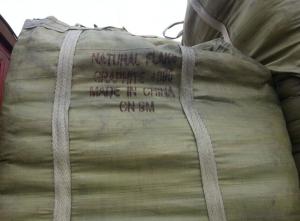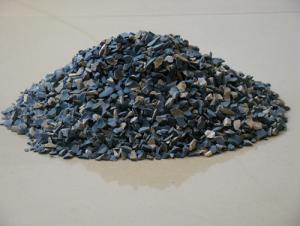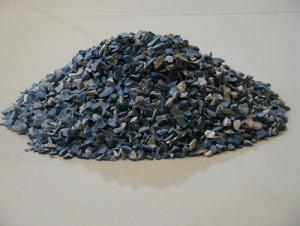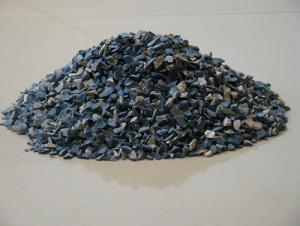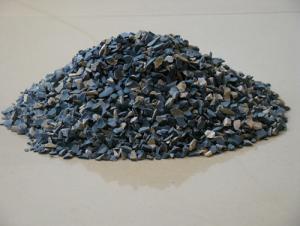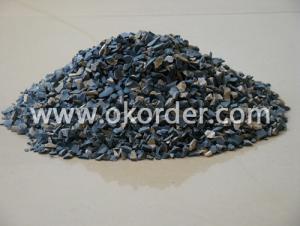Flake Graphite With High Purity For Refractory
- Loading Port:
- Qingdao
- Payment Terms:
- TT or LC
- Min Order Qty:
- 50 m.t
- Supply Capability:
- 5000 m.t/month
OKorder Service Pledge
OKorder Financial Service
You Might Also Like
Flake Graphite With High Purity For Refractory
Feature
Good Quality& High Heat-resistance
Competitive Price & Timely delivery
Specification
The particle size ranges from (325mesh-35mesh), and the carbon content ranges from85 to 99.9%.
PROPERTIES | CNBM-NFG1 | CNBM-NFG2 | CNBM-NFG3 |
Medium Carbon | High Carbon | High Pure | |
Carbon | 85-95% | 96%-99% | 99.9% |
Mesh | 45 μm-500 μm (325mesh-35mesh) | ||
V.M. | ≤4% | ||
Moisture | ≤0.5% | ||
Color | Black Shiny, | ||
Appearance | Flake | ||
Packaging & Shipping
Packaging: 1.25MT jumbo bags or 1MT jumbo bags
Delivery details: according to customers’ requirements
Application
1.Used as release agent lubricant in the production of chemical industrial catalyzer.
2.Used as high temperature resistance lubricant base material,erosion resistance lubricant base material.
3.Used as powder metallurgy release agent and metal alloy material.
4.Suitable for making graphite refractory bricks.
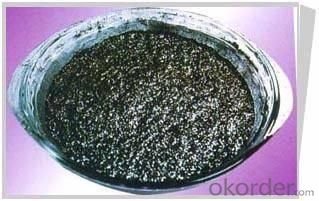
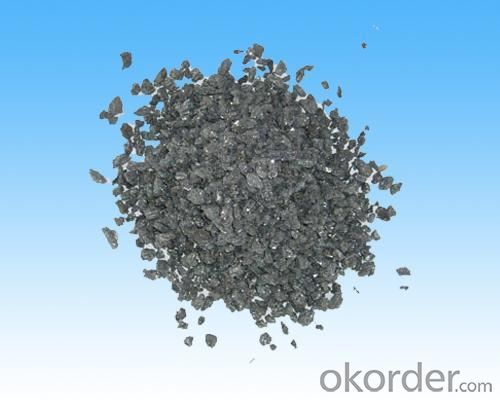
- Q:What's the maximum temperature that the refractory ceramic fiber cloth can endure?
- Ceramic fiber cloth is high temperature resistant and its continous use temperature can be up to 1000℃. It has high temperature resistance, low heat conductivity, thermal shock resistance, low thermal capacity; superior insulating property at high temperature, long service life; resistance to nonferrous metals like molten aluminum and zinc erosion; low and high temperature strength; innocuity with no adverse effect on the environment; and it is easy to install.
- Q:what is steel fire door made of ?
- 1. fire resistance steel door has steel made door frames, door leaf framework and door panels. if the door leaf is filled with nontoxic fire insulation material, added with fireproof hardware accessories, which consists of a door that is fire resistance.
- Q:How should fireproof building materials be ranked?
- According to our national standard GB8624-97, the combustion performance of building materials are divided into the following levels: A class: Incombustible building materials: the material is almost incombustible. B1 class: Flame-retardant building materials: they are better in fire retardation. It is non-combustible when meeting open fire in the air or under high temperature, and it is difficult for the fire to spread quickly. Besides, when the fire source is removed, combustion stops immediately. B2 class: Combustible building material: It has certain fire retardation. In case of open fire in the air or at high temperature, it will immediately burst into flames, and easily lead to the spread of fire, such as the spread to wooden pillars, timber roof truss, timber beams, wood stairs, etc. B3 class: Flammable building material: It has no fire retardant effect at all, but is highly flammable with high fire risk. Hope my answer can be accepted.
- Q:What kind of materials can be tested their electrical resistivity in the current refractory industry?
- Graphite, Magnesium Oxide, and alumina are all feasible.
- Q:What's meaning of CN of fire-resistant material?
- The commonly used preparation methodsinclude shock compression, high-pressure pyrolysis, ion implantation, reactive sputtering, plasma chemical vapor deposition, electrochemicaldeposition, ion beam sputtering, , low-energy ion radiation, pulsed arc discharge,pulsed laser inducing, etc. But the compounding result of superhard materialis not ideal due to deposition of amorphous CN film, nanometer level sizedC3N4 crystalline grain set in the amorphous film and few large graincrystal.
- Q:Fire insulation and fireproof insulation board materials What is the difference in performance?
- What is the difference between fireproof insulation board and fireproof materials in their performance? Fireproof Materials prevents burning through insulating while others by chemical reactions. The overall heat conductivity coefficient of Insulation materials are generally lowered by thermal conductivity of the material itself and the structure of the material. Inorganic active insulation material uses ordinary cement, insulation stone, calcium powder, platycodon grandiflorum as the main raw material, produced after numerous tests with advanced production technology and chemical technology. Products features fire retardant,anti-aging properties and stable performance, low deformation coefficient, environmentaly friendly, compatible with the wall base layer and plastering layer. It has good security and stability and is as durable as ordinary buildings. Strong fire resistance: Fire insulation board is made of inorganic materials (cement), fireproofing level reaching to A1. As it does not burn, it is fireproof.
- Q:What defect does fused cast refractories have ?
- In glass production, in addition to refractory as a building material and consider its durability, we still must attach great importance to its influence on glass quality. In such cases, the impact on the quality of glass is mainly the defects that eroded down refractory materials mixed in the glass, thus being prodeced of grass products. Defects are mainly foreign body defects such as sand, knot and wave reinforcement. What may directly affect the quality of glass are the wall brick and brick kiln bottom.
- Q:What's the difference of fire-resistant material's density, specific gravity and bulk specific gravity?
- It usually used to test lightweight refractory. Density can be divided into apparent density (usually called as density) and true density: apparent density includes blow hole inside the sample; Unit weight is using quality to divide volume of sample and specific weight is used to represent liquid.
- Q:can slag tailings be used to be the base materials of refractory materials ?
- perhaps not, because it has many pores.
- Q:What are the components of refractory clay?
- It is different from non-cement castable refractories, which does not rely on the addition of cement for combination, instead it uses chemical binder. It is refractory castable (also known as chemical bonding castable). Non-cement refractory castable takes oxide or synthetic compound ultra-fine powder or oxide sol-gel which is similar to the chemical composition of material in tungsten castable. Since the use of superfine powder or sol as binder, it has low impurity content, and therefore the refractoriness and slag erosion resistance of the castable will not be reduced. Besides, the self combination in use can help to improve high-temperature structural strength. Non-cement castable refractory is made up of refractory aggregate and powder, superfine powder of oxide or sol, trace amount of dispergator (or anti-coagulant) and proper slow acting hardener. Non-cement castable is mainly coagulated and combinated by ultrafine powder of oxide or sol, therefore, it has certain requirements for ultrafine and sol. Ultrafine powder used refers to less than 1 / zm particles. Ultrafine powder used in non-cement castables are SiO2, Al2O3, Cr2zrOz, etc. SiO micro powder is often adopted, which is the dust recycled during the smelting of metallic silicon, ferro-silicon alloy, the generation process is as follows: This recycled SiO2 powder has an average particle diameter of 0.5 pM, and it is spherical with large surface area. It is amorphous substance with high activity, so it has good bonding strength. The sol used are mainly alumina oxide and silica sol. Silica sol is made by ion exchange of sodium silicate after Na ions are removed. It can also be made after hydrolysis of ethyl silicate. There are several ways of preparing alumina sol, the easiest method is to prepare by the reaction of metallic aluminum or alchlor with hydrochloric acid.
1. Manufacturer Overview |
|
|---|---|
| Location | |
| Year Established | |
| Annual Output Value | |
| Main Markets | |
| Company Certifications | |
2. Manufacturer Certificates |
|
|---|---|
| a) Certification Name | |
| Range | |
| Reference | |
| Validity Period | |
3. Manufacturer Capability |
|
|---|---|
| a)Trade Capacity | |
| Nearest Port | |
| Export Percentage | |
| No.of Employees in Trade Department | |
| Language Spoken: | |
| b)Factory Information | |
| Factory Size: | |
| No. of Production Lines | |
| Contract Manufacturing | |
| Product Price Range | |
Send your message to us
Flake Graphite With High Purity For Refractory
- Loading Port:
- Qingdao
- Payment Terms:
- TT or LC
- Min Order Qty:
- 50 m.t
- Supply Capability:
- 5000 m.t/month
OKorder Service Pledge
OKorder Financial Service
Similar products
New products
Hot products
Related keywords
